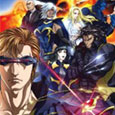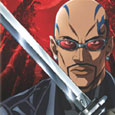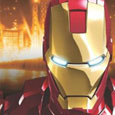Madhouse (2011), Sony Pictures Home Entertainment (July 31, 2012), 2 discs, 284 minutes plus supplements, 1.78:1 ratio, Dolby Digital 5.1, Not Rated, Retail: $19.99
Storyboard:
The mutant Logan travels to Japan to find his lover, who has been kidnapped by her father for the purpose of an arranged marriage with another crime lord.
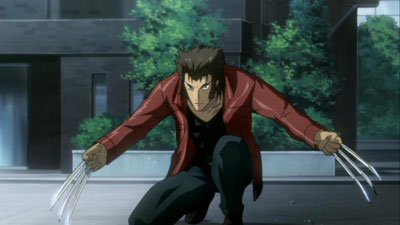
The Sweatbox Review:
I have never been enamored with the character of Wolverine— too much anti-hero for my taste. I guess I can see the appeal for some, but I like my heroes a little shinier and less violent. Still, as evidenced by my enjoying the Blade anime, I can still appreciate a well-told tale with an interesting plot. So, with screener copy of the Wolverine anime in hand, I prepared to be surprised. But… not so much, as it turned out. Wolverine turned out to include much of what I dislike about the character, and not much else to appeal to me story-wise. Even the animation style seemed conventional and boring, compared to the other Marvel Anime series.
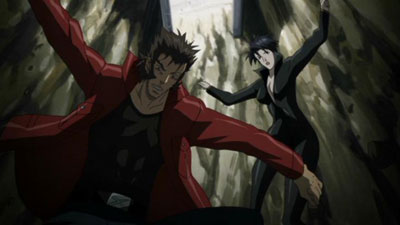
Wolverine is, of course, a Canadian mutant with an adamantium-coated skeleton that also covers a set of three claws that pop out of the posterior surface of both wrists. He is a voracious fighter, and has a “healing factor” that allows him to recover quickly from injuries and makes him hard to kill or even poison. He debuted in an issue of Incredible Hulk in 1974 before getting broad exposure in Marvel Comics’ Giant Size X-Men #1 a year later. Wolverine quickly became a fan favorite in the regular X-Men title, due to his gruff antiauthority attitude, feral nature, and uniqueness of his powers. His true origins remained a mystery for many years, with only a single name of “Logan” being known, until his past was explored more fully in the recent decade’s worth of comics. He has become known as a superhero that is willing to kill, though he takes no pleasure in it. He is simply a killer by nature, though largely a product of his experiences.
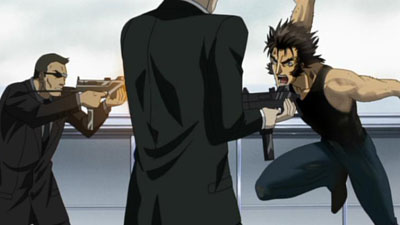
The anime version of Wolverine is basically recognizable, but there are significant changes. For starters, no costume is used here. Logan is also younger, and much leaner and taller; his comic book counterpart is a squat, middle-aged (in appearance) guy only a little over five feet tall (though certainly drawn inconsistently over the years), while the lanky anime Logan appears to be proportioned to be about eight feet tall. (I’m exaggerating a little, and Logan’s stylized physique is not out of place compared to the other character designs, but he’s still way taller here than in the comics.) He also sounds a whole lot like Clint Eastwood, as voiced in the English dub by Milo Ventimiglia (Heroes), and at times comes off as a James Dean type. And, naturally, he is portrayed in the anime to be not unlike a samurai, pursuing justice as a lone champion of righteousness.
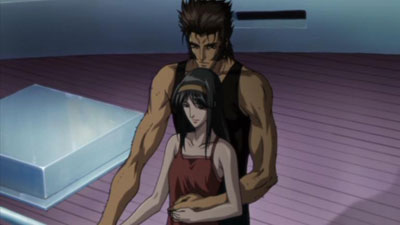
The plot is largely inspired by Wolverine’s four-issue self-titled comic book miniseries by Chris Claremont and Frank Miller from 1982. In Chapter One of the anime, Logan’s girlfriend Mariko is kidnapped in spectacular fashion, leaving a battered Wolverine pining for his lost love. Eventually, he is able to track her to Japan, after finding out that she was taken by her own father Shingen. Shingen is a nasty crime boss with a black belt, and it is his intention to marry Mariko off to another gangster named Kurohagi, thereby creating an alliance and forming a criminal empire. Of course, Wolverine will not let this happen.
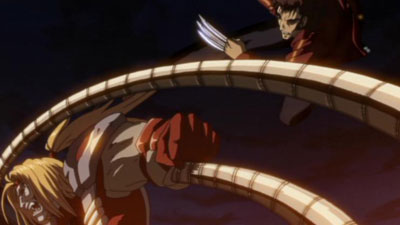
His goal of saving Mariko is constantly being challenged by adversaries, including numerous Yakuza enforcers, the assassin Kikyo (who ridiculously produces long swords out of his wrists), and Omega Red, a Russian nut job who shoots metal tentacles out of his body. What Omega Red is doing in Japan is not exactly clear, making his time in the serial somewhat confusing and boredom-inducing. Wolverine also picks up an ally, the beautiful assassin Yukio, who is known for the circular blades she throws.

After numerous boring fight scenes, and Wolverine being branded a fugitive, he has to chase after everyone to Madripoor. He gets there by getting a lift from his colleague Cyclops of the X-Men, sporting different duds here than he did in the X-Men anime (no funky shoulder pads or spiky hair on display this time). Madripoor is a lawless island state, where Kurohagi has taken over from his deceased father. It is here that the wedding is to take place. Wolverine meets up with another faction eager to take on Kurohagi, hoping that Wolverine will be their champion. The various agendas within this group, juxtaposed against Wolverine’s own quest to save the woman he loves, and the mystery behind why Yukio is so concerned about the outcome, all give this serial its strongest appeal. There’s a lot going on here, and it threatens to get interesting.
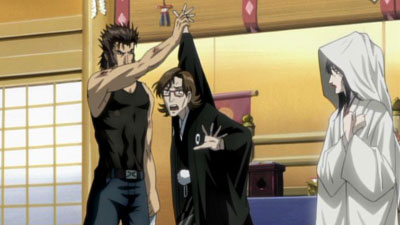
Unfortunately, a weak script undermines it all. The biggest issue is Mariko, supposedly the woman that Wolverine loves. It’s just too bad that she remains a cipher throughout the story, passively going along with her father’s wishes, resigned to her fate. We get no real idea of why Logan is willing to risk all in order to save her. Also, while the second half of the story gets tighter, the first few chapters meander through various fight scenes with no real payoff, particularly the aforementioned nonsensical Omega Red interlude. (I may be exaggerating; maybe I was just bored with the story already.) The inclusion of A.I.M., the techno terrorist scientists, also seems to serve little purpose to the storyline. Too many things happen without good explanation or reason, and the result is a disjointed mess. The final chapters gain momentum and almost redeem the show, but the less-than-happy ending killed any enthusiasm I was gaining. By the end of it, one is only left to wonder what the whole point was. Tragic endings have their place, but there still needs to be something gained by the journey. Here, everything is lost. It’s such a huge flaw for this series, that it’s hard to avoid the issue, even if it treads on spoiler territory.

Wolverine fans will get plenty of what they like, though. The action is brutal, and Wolverine gets to cut loose with his claws. The body count is enormous, and there’s certainly blood spilled, though the most gruesome happenings do tend to still happen off-screen. If that’s enough for you, then by all means enjoy. Other may find this series lacking.
Is This Thing Loaded?
In The Marvel Anime Universe: Wolverine Reborn (9:11), the Marvel creative executives, as well as story creator Warren Ellis, discuss what makes Wolverine so suitable to an anime interpretation. They push the idea of Wolverine as a samurai character, and one has to admit that the idea works. They also acknowledge the appeal of allowing Wolverine to cut loose and achieve a level of violence that he’s never seen before in animation.
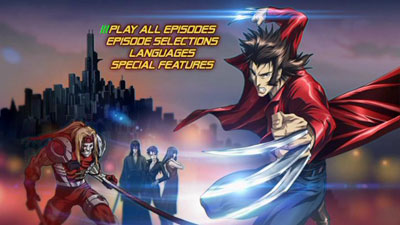
The Ferocious Antihero: Wolverine Defined (9:07) sees the same folks each describe the character of Wolverine. They speak in largely general terms, alluding to his innate sense of tragedy and loneliness. As far as the comics, they mostly address the Claremont/Miller miniseries, without discussing anything further of the character’s origins. Even at nine minutes, it gets repetitive, but it’s short enough that it still seems worthwhile.
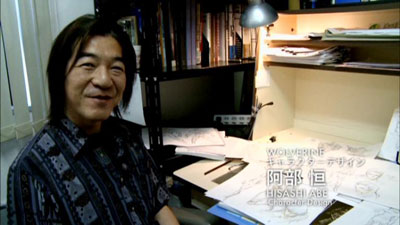
Over to Disc Two, we get Wolverine Meets X-Men (30:02), which has the Japanese creators of the anime discussing their thoughts on Wolverine as a character, how he fits in with a Japanese sensibility, and how his character differs here compared to his appearance in the X-Men anime. Much of the discussion is between four men sitting on the floor having tea, but several others are interviewed at Madhouse. Some handsome production artwork is shown, and we get a nice sense of how this series was handled. This interesting featurette is in Japanese, with English subtitles.
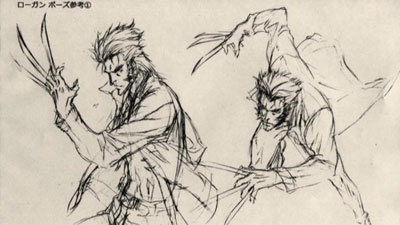
The second disc also has Previews for Attack Of The Show, Resident Evil: Damnation, Starship Troopers: Invasion, 21 Jump Street, Lockout, and The Raid: Redemption.
Case Study:
The keepcase holds a disc on each side of its interior, with an insert advertising Attack Of The Show!
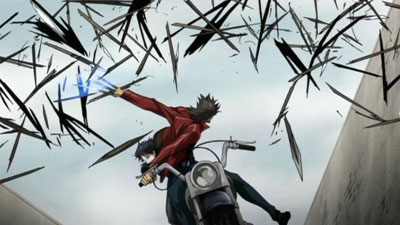
Ink And Paint:
The video transfer is actually quite good. Aliasing is very minimal, considering all the fast action and numerous quick camera pans. The 16:9 image could be a tad sharper, (ironic, considering all the blades on display), but that’s just likely due to me getting so accustomed to hi def these days. The image is pristine, befitting the newness of the animation. This challenging material could have easily degraded into a blocky digital mess, but in fact looks very good.
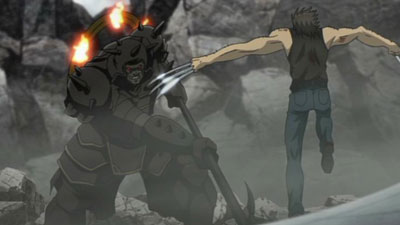
Scratch Tracks:
The discs default to the Japanese 5.1 track and English subtitles, but these can be reversed. (English captions are also available.) Both tracks have fairly aggressive sound designs, making good use of 5.1 surround set-ups. Slashing sounds (there are a lot of those) are crisp, while bass is just slightly lacking. For a TV show, this is pretty good stuff, even if it’s not reference material.

Final Cut:
Overall, I think the Marvel Anime experiment was a success. I was impressed with most of the four series, even if Wolverine was simply not for me. I don’t mind the violence so much, but Logan’s story suffers from script problems, nondescript character designs, and a downbeat ending. The technical specs are good, however, and the bonus materials solid. So, if you love Wolverine, and would dearly love to see him truly unleashed in a way that network television never allowed, here is your chance.
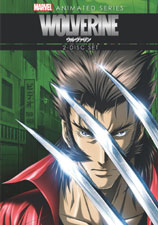 | ||
 |








